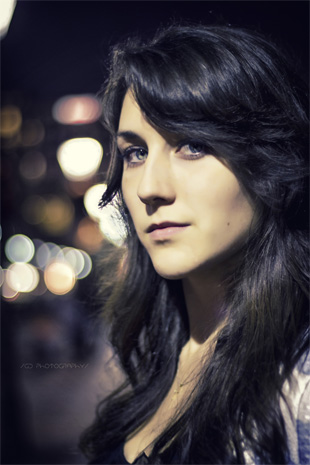We’ve all seen stunning portrait photos that have a blurred background while the subject of the photo is perfectly focused. When done correctly, these photos can be very dramatic. However, it might seem hard to accomplish, especially if you’re not familiar with the proper techniques. A faster prime lens (with greater aperture capabilities) will give you an edge in this technique, but even an off-brand lens, such as a Sigma 85mm lens will give excellent results if you follow the tips in this article.

“Night life” captured by Gagan Dhiman
Shooting pictures with blurry backgrounds is directly related to something called Depth of Field (DOF). DOF is the range–from front to back—of the picture that is in focus.
You can have an infinite range, meaning the photo will be totally in focus in both the foreground and the background. Conversely, you can have a range of focus that is as shallow as an inch or less. The more shallow the range of focus, the more blurry the background will be.
Controlling Depth of Field
Some DSLR cameras have a little button that shows the area of focus in the viewfinder, but a little knowledge about how to accomplish your goal will be very helpful. There are a couple of settings on your camera that can give you a great shot with blurry background, but there are also some techniques involving setting up the shot that will help. Here is a short list of things to be aware of when you’re ready to shoot award winning portrait photography.
Distance between the camera and the subject
To increase the blurriness of the background, simply move closer to the subject. Taking a photo from 50 feet away will give a large range of focus. Move closer to within 10 feet, and you will significantly reduce the range of focus, giving you a more blurry background.
Distance of the subject from the background
This is similar to the first tip. If the subject of your shot is standing right in front of something, such as a wall or a tree, the background will tend to be in focus more than if you move your subject away from the background objects. Thus, instead of the wall being 3 feet behind, have the subject positioned 10 feet in front of the wall.
Focal length of the lens
The formula is really very simple. As the focal length of your lens increases, the depth of field decreases. Wide angle lenses in portrait photography are becoming more popular, but it is because it is a new twist rather than a blurry background success story. Use a 50mm lens, and you may get a decent blurry background, but with a 100mm lens, your chances are dramatically improved. Perhaps the most popular focal length is in the 85mm range. A telephoto zoom is also widely used, especially the 70–200mm lenses.

“OO” captured by Thomas Leuthard
Aperture setting
Almost any information you read about DOF will start with aperture settings. While using the techniques outlined above will improve your shots, a wide aperture lens is your best tool for getting a blurry background. Pro shooters have very expensive glass with apertures as low a f/1.2, but you can take great photos with a less expensive lens that has an aperture of f/2.8. The wider the aperture, the more shallow the DOF.
If you can satisfy all of these suggested recommendations, you will move yourself immensely closer to the goal of a blurry background with the subject popping and capturing the viewer’s eye.
About the Author
Grab your gear and get ready to take some amazing shots as you master the art of people photography with a Canon portrait lens. There is a great lineup of outstanding lenses at http://www.canoneoslenses.org that will get the blurry background you desire.
Go to full article: Shallow Depth of Field for Portraits
What are your thoughts on this article? Join the discussion on Facebook or Google+
Article from: PictureCorrect